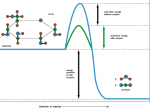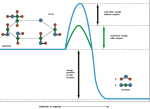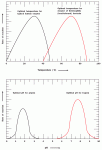Ho Huu Tho
Senior Member
#8.3
All enzymes are characterized by having a high degree of specificity for their substrates, and they accelerate the rate of chemical reactions tremendously, often by a factor of a million times or more. Most enzymes function in the cellular environment at mild conditions of temperature, pH, and salt. There are few nonbiological catalysts that can be so efficient in this type of environment.
Mọi enzym đều được đặc trưng bởi tính đặc hiệu cao đối với các cơ chất của chúng và làm tăng tốc độ các phản ứng hoá học một cách dữ dội, thường tăng khoảng 1 triệu lần hoặc hơn. Hầu hết các enzym hoạt động trong môi trường nội bào với nhiệt độ, pH và nồng độ muối vừa phải. Chỉ có một số ít các chất xúc tác không phải sinh học lại có thể hoạt động hiệu quả trong kiểu môi trường như vậy.




